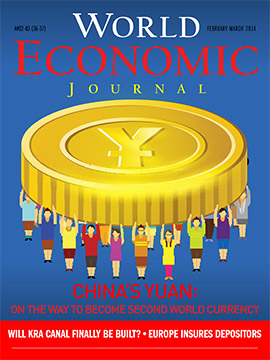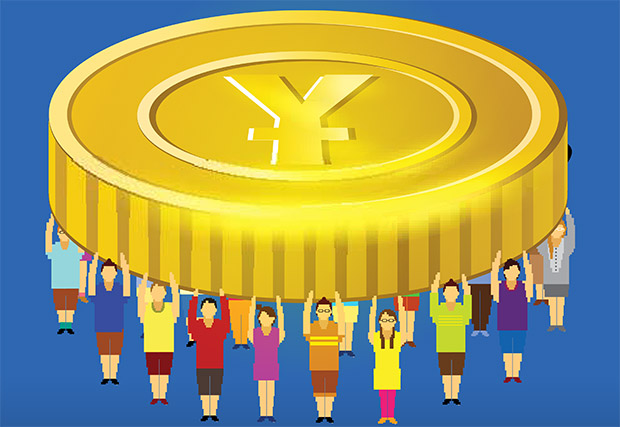

The Main Point
China’s Yuan: on the way to become second world currency

Diego N. Marcos, Professor of Macroeconomics of National University of Rosario, Santa Fe, Argentina in an interview to WEJ spoke about the internalization of Yuan (RMB), the effect it will cause on global economy and the conditions China has to keep it mind in order to succeed.
Investments and Macroeconomics
Possibilities
The Thai Canal: To Be or Not To Be

A canal through Thailand’s Kra Isthmus is a project that could change the economic and political map of Southeast Asia. At a time when the center of global trade and to some extent politics is smoothly transitioning from the West to the East, it is difficult to overestimate the effects of opening a new transportation artery. But while there are many ardent supporters, the project has serious opponents as well.
Banking and Finance
Europe
Europe Insures Depositors

A European banking union is finally becoming a reality. At the end of December 2013, the finance ministers of the 28 European Union member states agreed on a Single Resolution Mechanism (SRM), consisting of a Single Resolution Board under the management of the European Commission and a Resolution Fund. The meeting in Brussels resulted in proposals for a ten-year development plan for the mechanism that will go into effect in 2016. The European Parliament is currently working to get approval on a consensual plan.
Infrastructure and Transport
Tourism
Spain Grows on Sea and Sun

2013 marked another record year for Spanish tourism: The problems of other Mediterranean countries and the attractive consumer prices not only attracted 5.6% more tourists than the previous year, but raised a number of vital questions for the sector.
Consumer Market
Trade
Back to the CSSR

The Soviet planned economy still draws nervous laughter and a number of questions from those who follow the Chicago school of economics. Products coming off the assembly line often had nothing in common with what consumers wanted. Mounds of identical fake-leather sandals sat in warehouses, while Polish and Czechoslovakian furniture manufacturers intentionally made heavier legs for tables and chairs, since manufacturing quotas had been set in kilograms.